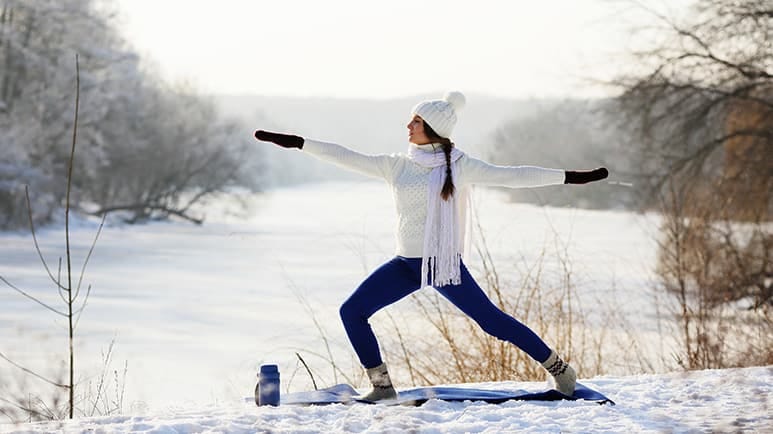How Exercise Helps Maintain Healthy Vitamin D Levels in the Wintertime
Description
STORY AT-A-GLANCE
During winter in northern climates, sunlight is too weak to trigger vitamin D production, leaving many people — especially those with excess body fat — at risk for deficiency
A 10-week study found that exercise alone, without supplements or weight loss, helped maintain levels of active vitamin D in overweight or obese adults
Physical activity altered enzyme activity in fat tissue, boosting the body’s ability to convert stored vitamin D into its usable form and preventing it from being broken down
People with the most fat tissue saw the biggest improvements in vitamin D activation, showing that exercise is especially important if you're carrying extra weight
Exercise trains your body to activate and protect the vitamin D it already has, offering a natural way to help maintain vitamin D levels through winter when sun exposure is limited

Your body needs direct sunlight, specifically ultraviolet B rays, to produce vitamin D, but during the winter in northern climates, that sunlight often isn't strong enough to trigger production. If you live in one of these regions, you may go months without making any vitamin D naturally. And if you also carry extra weight, your risk of deficiency climbs even higher.
Vitamin D isn't just for bones. It helps regulate immune function, inflammation, insulin sensitivity and muscle health. The most active form drives these effects by binding to receptors in nearly every organ system in your body. Without enough of it, you increase your risk for fatigue, poor blood sugar control, depression, chronic pain and reduced resilience to infection.
Vitamin D deficiency affects about 1 billion people worldwide.1 Those with higher body fat are particularly at risk, since vitamin D gets locked away in fat tissue and becomes harder to access. Here's what makes this issue even more urgent: Most people with overweight or obesity show some degree of vitamin D dysfunction year-round, which gets worse in the winter.
A randomized controlled trial offers a solution — one that doesn't require supplements or weight loss.2 Let's explore how exercise, even without shedding pounds, changes the way your body handles vitamin D and helps keep your active levels stable through the darkest time of year.
Exercise Helps Convert Stored Vitamin D Into Its Most Active Form
In the study, published in Advanced Science, researchers set out to answer an important question: Does regular exercise during the winter months preserve vitamin D metabolism in people with overweight or obesity — even without supplements or sun exposure?3 The team ran a 10-week trial to measure the effect of physical activity on various forms of vitamin D in the body.
Participants were inactive adults with overweight or obesity — The study included adults who were largely sedentary and had a body mass index in the overweight or obese category. None of them were taking vitamin D supplements, and the study took place during winter — meaning there was virtually no sunlight capable of triggering vitamin D production in the skin. This allowed the researchers to isolate the effect of exercise alone.
Only the group that exercised preserved their active vitamin D levels — While both groups — those who exercised and those who stayed sedentary — experienced some decline in vitamin D, only the exercise group was able to maintain their levels of the active form that actually affects your health. This is the version that interacts with receptors throughout your body to control calcium balance, immune response and cellular repair.
Sedentary participants lost 15% of their active vitamin D — The people who didn't move saw a measurable drop in their active vitamin D levels over just 10 weeks. Meanwhile, those who followed a moderate-intensity indoor cycling and resistance training program were able to keep their levels steady, despite not losing any body fat during the study.
Even with no weight loss, exercise changed vitamin D status — One of the most surprising findings was that participants didn't need to lose fat in order to gain this benefit. This is significant, because obesity is known to trap vitamin D in fat cells and reduce its availability. Yet physical activity appeared to override that effect by improving the body's internal vitamin D regulation.
Exercise Influenced How Fat Tissue and Muscles Manage Vitamin D
The researchers discovered that physical activity increased the expression of vitamin D-related enzymes in fat tissue and muscle. These enzymes help turn stored vitamin D into its active form — the kind your body actually uses — and also help keep that active form from being broken down too fast. In other words, exercise didn't just slow vitamin D loss; it reprogrammed how the body processes and conserves it.
The biggest benefits were seen in those who had high fat tissue levels — Researchers found that individuals with the highest fat mass had the most to gain. Their fat tissue was less efficient at converting stored vitamin D to the active form at baseline, but after the intervention, that dynamic shifted. The more a person exercised, the better their conversion rates became, even though the fat tissue volume didn't decrease.
Two key enzymes controlled how vitamin D was used — Researchers looked at two important enzymes: one that turns vitamin D into its active, usable form, and another that breaks it down. In people who didn't exercise, the helpful enzyme went down while the one that destroys vitamin D went up. But in those who exercised, the body did the opposite — it boosted the enzyme that activates vitamin D and reduced the one that breaks it down.
Muscle tissue likely plays a supportive role in vitamin D balance — While the study focused on fat tissue, exercise is known to influence muscle metabolism as well. Although researchers didn't measure changes in muscle gene expression directly, the overall improvements in vitamin D activation suggest that better whole-body metabolic health, including muscle function, helps preserve vitamin D during winter.
Exercise reshapes how your body handles vitamin D — By changing the activity of specific enzymes in fat tissue, regular exercise helped participants maintain more of their active vitamin D, even without losing weight or taking supplements. This challenges the common belief that supplements or sun exposure are the only solutions, offering a new path






